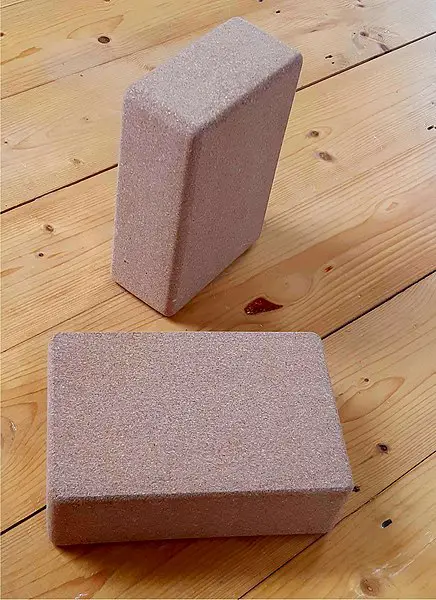The Benefits of Cardio: Making Exercise a Part of Your Daily Routine
Lucky for us, there’s no need to hit the track or treadmill every day to get the most out of our workout. Cardio exercise – which is any activity that gets your heart rate up – can help boost your fitness in just about any form. Whether you’re walking, running, swimming, jumping rope, or doing plyometrics, there are plenty of ways to get your cardio fix without breaking a sweat. Here, we’ll look at some of the benefits of each type of cardio, and how to go about incorporating them into your routine.
Low-Impact Cardio for a Smooth and Stress-Free Workout
If the thought of jumping about and sweating it out to get your heart pumping puts you off, then low-impact cardio is the way to go. This type of exercise takes the impact out of the equation, making it easier on your joints – plus, it can even be more enjoyable!
Let’s start with walking. Not only is it simple and accessible, but it’s also a great way to get your heart rate up without too much effort. Think of it as the perfect form of “movement meditation” to break up the monotony of everyday life. Plus, you can hit the trails on a nice day and make the most of the fresh air.
Swimming is another great one, because while it provides a cardiovascular workout, it’s also low-impact. In addition to that, it can improve your posture, increase muscle strength and give you a full-body toning. What’s not to love? Oh, and don’t forget about the stress relief factor – combining movement in the water with deep breathing helps to relax the mind and body, restoring peace and harmony.
High-Impact Cardio
If you’re looking to really get your heart rate up and break into a sweat, high-impact cardio is your go-to. This kind of exercise includes running, jumping rope, and plyometrics.
Running, of course, is one of the oldest forms of exercising there is. With just a pair of sneakers, you can take off on a dirt road, pavement, or treadmill and reap all the rewards of this classic exercise. Not only is it an efficient way to burn calories, but it’s low cost, accessible practically anywhere, and can be great for relieving stress.

Another fun form of high-impact cardio is skipping rope. You may remember this as a playground staple from your childhood, but don’t let that fool you! Jumping rope is a high-caliber workout that’ll have you feeling the burn in no time. It’s easy to learn, doesn’t require much space, and packs more than enough intensity to make your muscles scream.
Finally, if you’re looking for something to really turn up the heat, try some plyometric exercises. These are intense moves designed to boost power and strength in short bursts – think jumping jacks, burpees and mountain climbers. Although they can be tricky to master, once you do, there’s no going back! Plyometrics will help you gain strength and agility while scorching calories at an incredible rate.
Interval Training: An Uphill Climb to Results!
If you’re looking to take your workouts to the next level, interval training is the way to go! This fast-paced exercise approach is designed to make you push yourself harder, and the results speak for themselves. Here are the basics of this intense form of exercise.
Interval training involves alternating bouts of high intensity activity with low intensity activity (or rest) during a single workout session. It typically involves doing a few minutes of an activity such as running or cycling at a higher intensity than normal, followed by a period of rest, and then repeating multiple times. Intervals can be as short as one minute in length or as long as 15 minutes.
This type of exercise is great for improving athletic performance and boosting cardiovascular fitness. Studies have also shown that interval training can provide similar benefits to traditional endurance training, but in much less time. Additionally, interval training can help you burn more calories in a shorter amount of time and reduce risk factors associated with chronic diseases.
But before you jump into interval training, there are a few things to consider first. First, it’s important to know your limits and not push yourself too hard when starting out. You should start off slow, with shorter bouts of activity and build up to longer sessions over time. It’s also important to remember to stay hydrated throughout and listen to your body – if it feels like you’re pushing too hard, take a break and lower the intensity.
Interval training is no walk in the park – it takes dedication and hard work. But it’s worth it in the end! With consistent effort and determination, you’ll find your fitness levels skyrocketing and your overall health improving in no time.
Strength Training: Discover the Benefits
Hey there! It’s Bob Woodward, and I’m here to talk to you about the importance of strength training – more specifically, why it should be part of your fitness routine. Now, before we dive in, let me just say that strength training doesn’t have to mean hitting the gym. You can get a great workout right at home.
So maybe you’re asking yourself: what is strength training? Well, to put it simply, it’s any exercise or physical activity that works on building muscle and strength. A few examples include push-ups, weightlifting, squats, pull-ups, and crunches.
But why should you bother incorporating strength training into your routine? Well, the answer is simple – it has tons of awesome benefits! For starters, it helps to improve your posture, which results in less back pain and improved mobility. Plus, it boosts your metabolism and burns fat, so you can pack on lean muscle and look better than ever. Plus, it increases your energy levels, so you’ll feel energized throughout the day. Finally, it can also help prevent injury, since stronger muscles are less likely to be injured during exercise or everyday activities.
All in all, strength training is an essential part of any healthy lifestyle, and it’s definitely something you should consider adding to your weekly routine. Who knows – you might even surprise yourself with the results! So make sure to check out the plethora of strength training workouts available online and choose one that works for you – then get to work and stay motivated.
Conclusion: All Types of Cardio Have Benefits
It’s time to wrap things up and sum it all up. We’ve taken a deep dive on different types of cardio, so you now have the inside scoop on what works best for you.
Low-impact choices like walking, swimming and biking certainly have their merits. They’re great if you have joint issues, prefer low intensity exercise, or just want an enjoyable way to stay in shape. High impact options like running, rope jumping and plyometrics are great for getting into peak physical condition and pushing your body to its limits.
Interval training is a great way to switch up your workouts and create challenges that keep you motivated and reduce boredom. And strength training helps build muscle mass and improve overall balance, stability and coordination. So no matter what your goals and individual needs are, there’s a top-notch cardio option out there to help you achieve them!
The bottom line? Try to include a variety of exercises in your weekly regimen, such as cycling, rowing and weights, to get the most bang for your buck. That said, listen to your body and enjoy yourself – give yourself permission to change it up depending on your mood and motivation levels.
Cardio Types FAQ
How many types of cardio are there?
I’ve been looking into this for some time now and it’s safe to say there are many types of cardio. Whether you want to get your heart-pumping with running, biking, or swimming – the possibilities are almost endless.
For those looking for more of a low impact workout, there’s options like step aerobics, kickboxing, and rowing. Then you’ve got your more intense workouts, like High-Intensity Interval Training (HIIT) and Tabata.
Let’s not forget about all the fun fitness classes out there, like Zumba, Jazzercise, and Pound Fitness. Dancing is an awesome way to get your cardio in too.
No matter your fitness level or goals, you can find a type of cardio that will work for you. Just remember to keep your routines fun, and never be afraid to switch it up and try something new!
What type of cardio is most effective?
As someone who’s been in the fitness biz for a few decades, I can tell ya that there ain’t no one-size-fits-all answer to this question. It all depends on your goals and your body type. But if you’re looking for the most effective form of cardio, my money’s on HIIT, or High-Intensity Interval Training. It might feel like a real killer at first, but that’s the beauty of it – you’re burning more calories in less time, and you can reap the benefits even after your workout is over.
Unlike activities like jogging or swimming, which mostly only work your muscles while you’re actually doing the activity, HIIT works your entire body and can kickstart your metabolism. Plus, it’s easier to stick to since it’s typically briefer than traditional cardio. You’re really getting the best of both worlds, ’cause it also works to build strength and endurance in addition to burning fat.
All in all, if you’re looking for an intense and effective form of cardio, HIIT is the way to go. Just make sure to warm up properly – you don’t want to overdo it and get injured!
What are 5 cardiovascular fitness types?
I’m all about making sure your cardiovascular system is in tip-top shape. That’s why I’m gonna lay out the five types of activities that’ll help you get there.
The first type of exercise is endurance activities, such as running, biking, or swimming. This is great for long-term fitness because it helps your body become more efficient at processing oxygen.
Strength training is another great way to get your heart rate up and help build a solid foundation. You can do anything from weight lifting to bodyweight exercises like push-ups or squats.
Interval training is a great way to shake up your routine and give your heart a real challenge. This is where you do short bursts of high-intensity exercise with rest periods in between.
Flexibility work is important, too. It’s not just about stretching and improving range of motion; it also helps with circulation and can help make your other workouts more efficient.
Finally, don’t forget about balance training! It’s important for your overall fitness and can help prevent injuries. Yoga, Pilates, and tai chi are all great ways to get the balance training you need.
No matter what your fitness level, these five types of workouts can help you become healthier and more fit. So don’t hesitate to give them a try!






